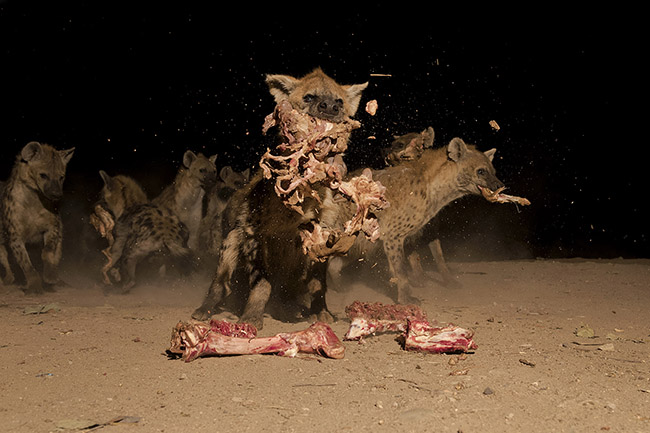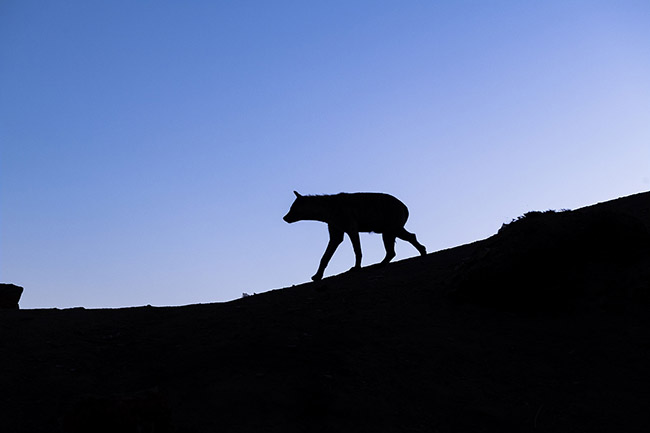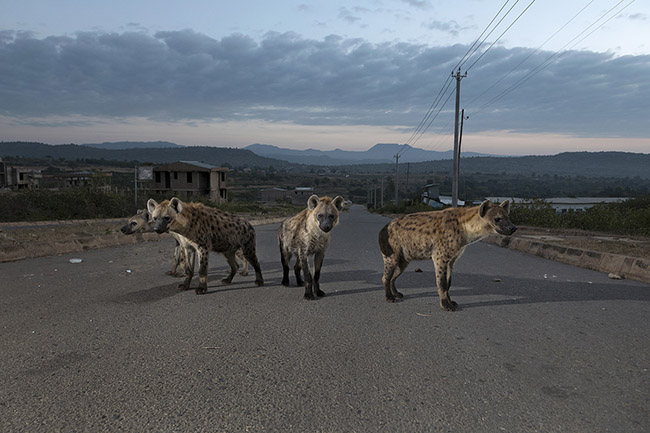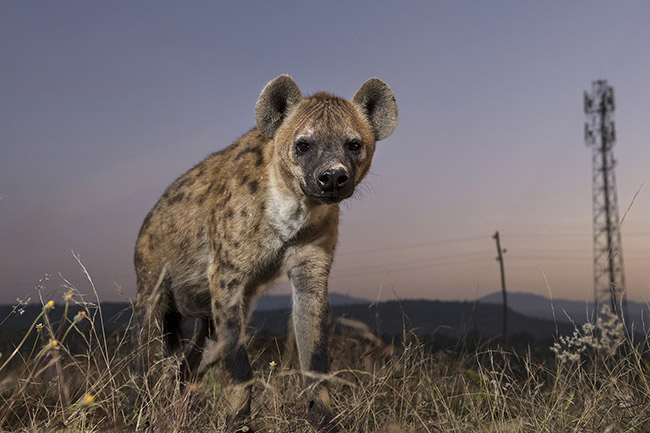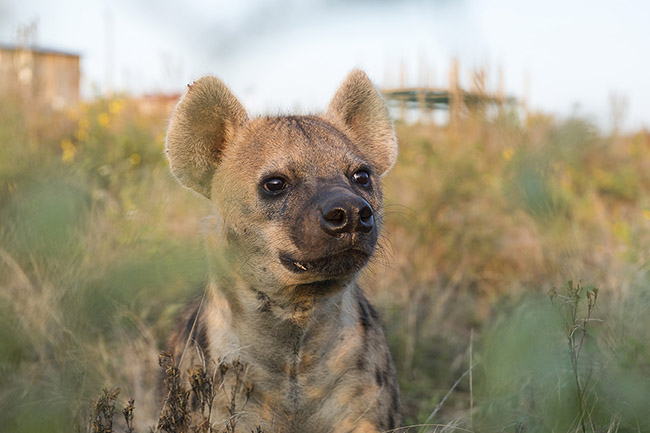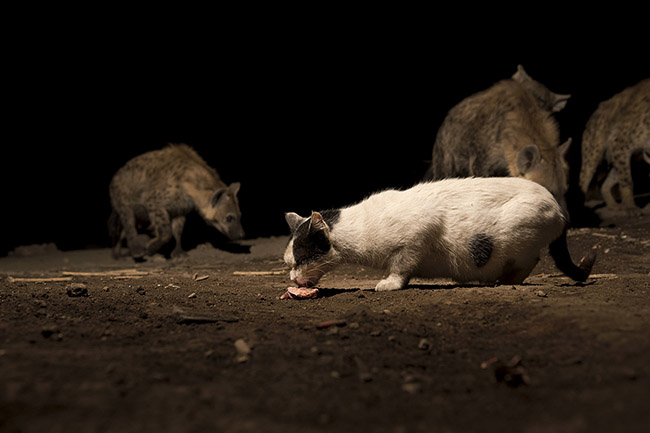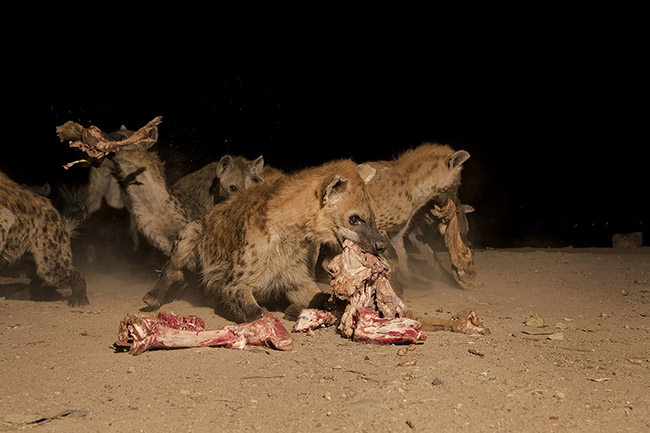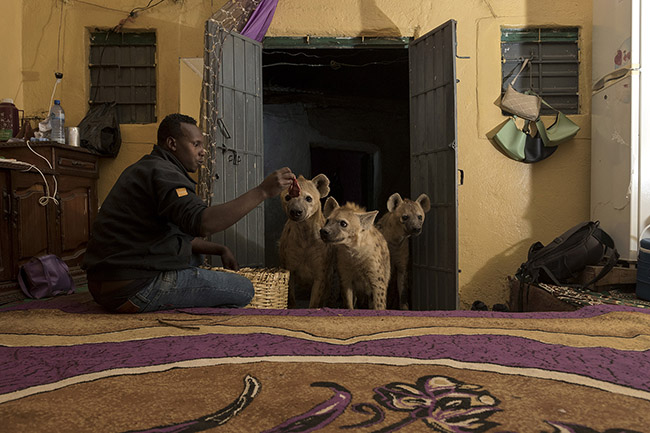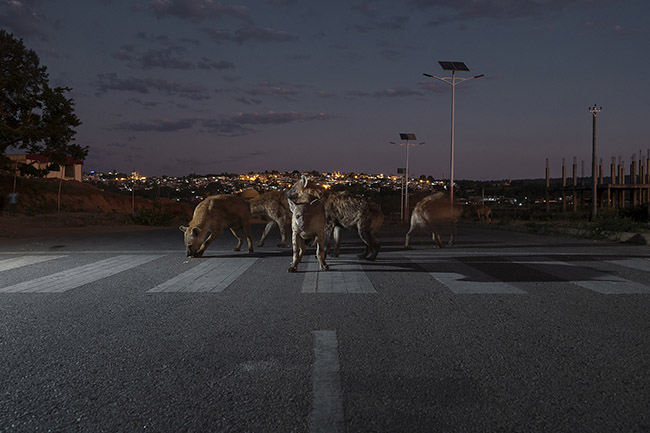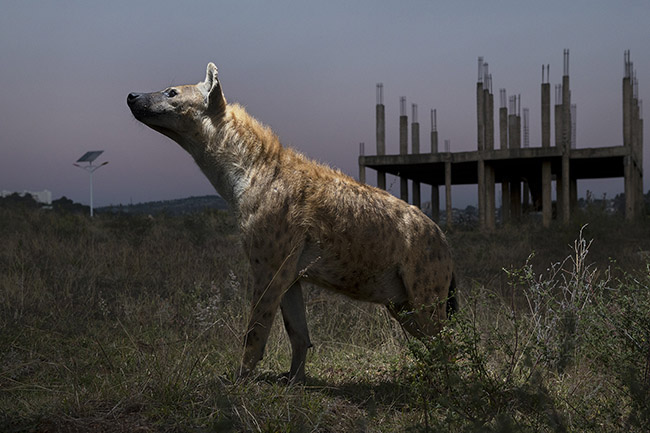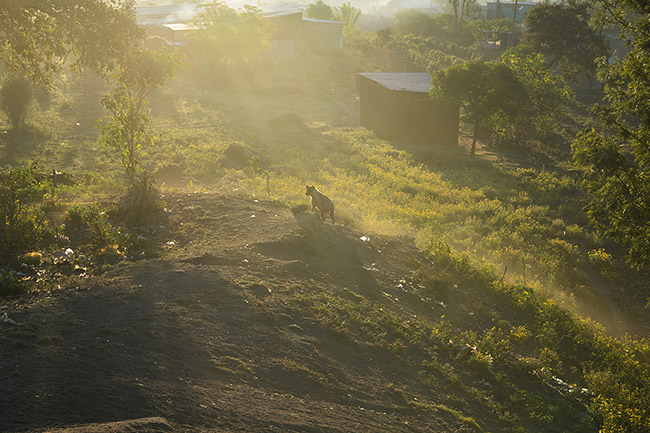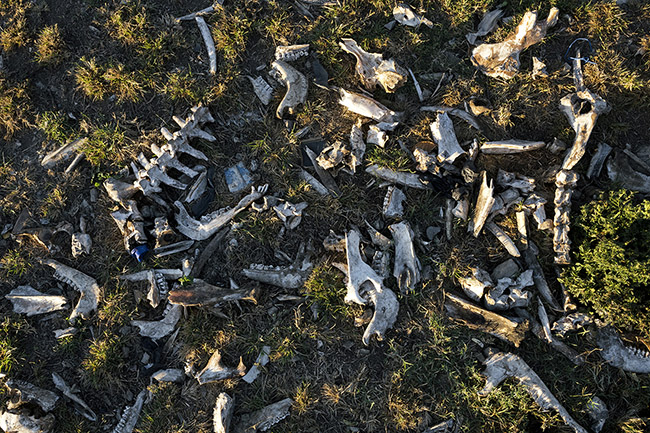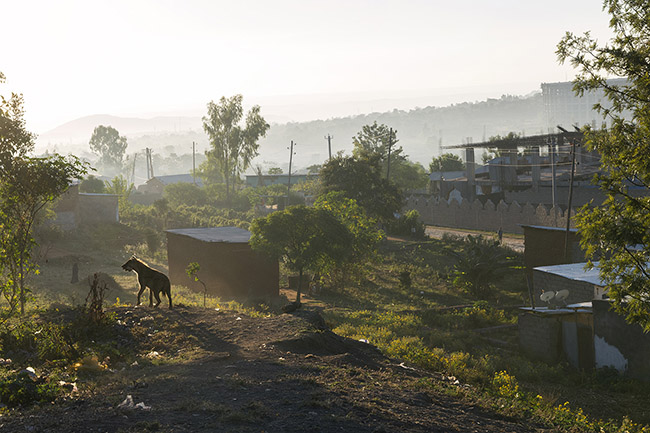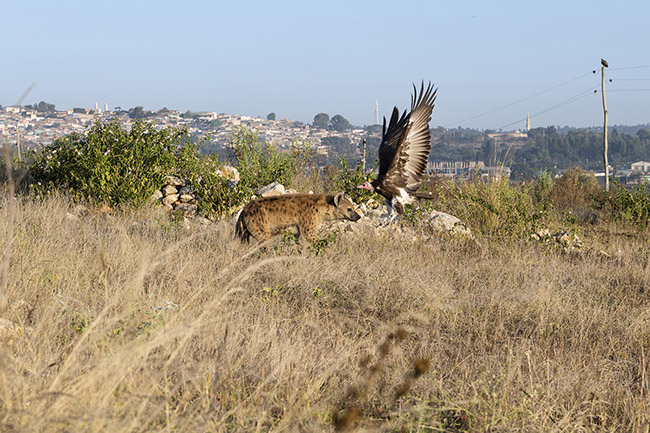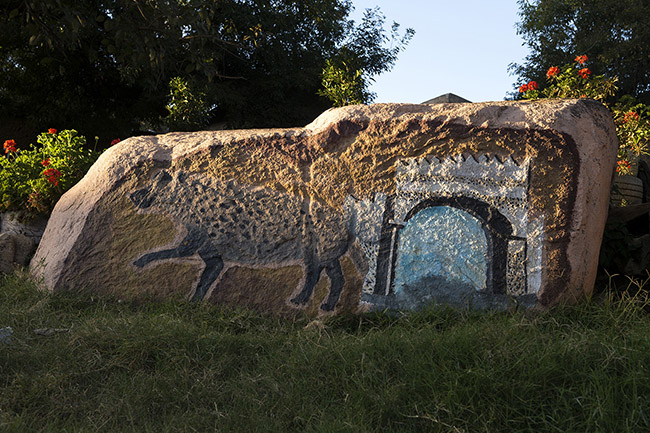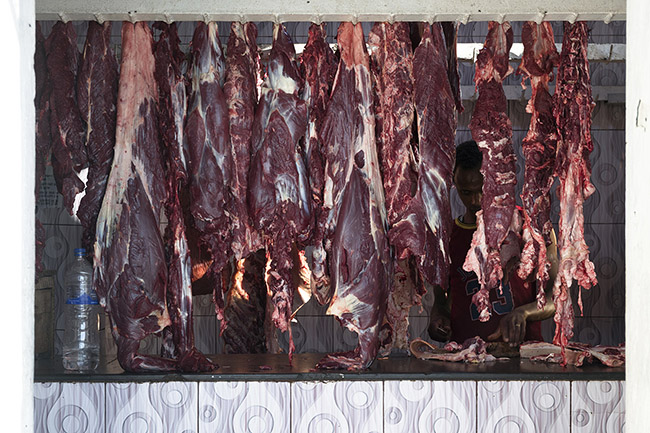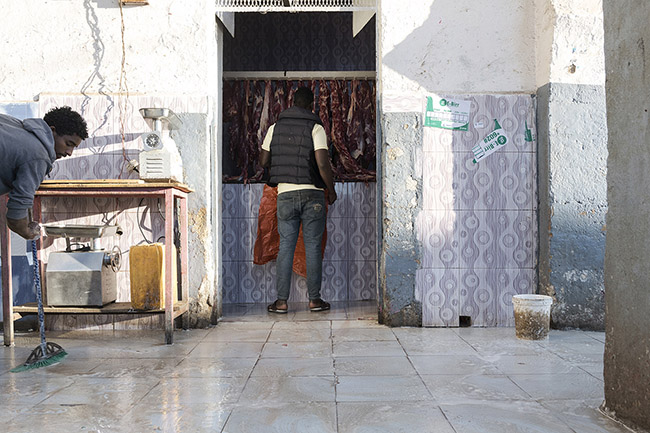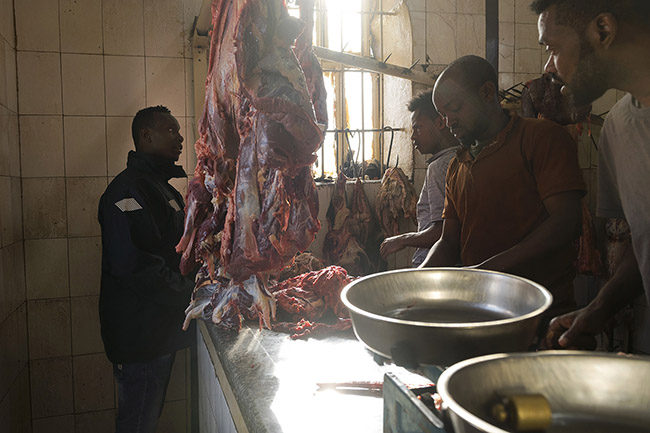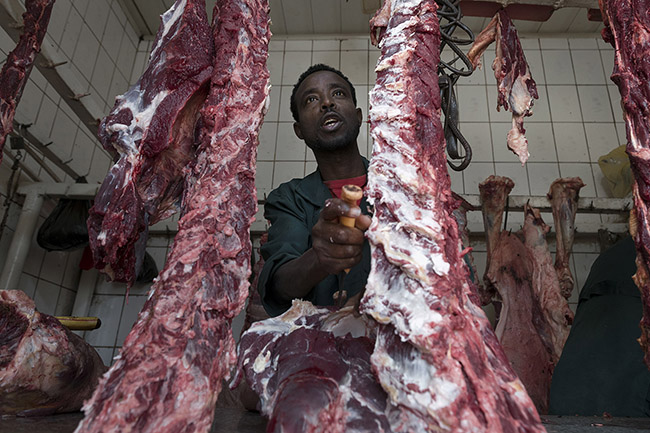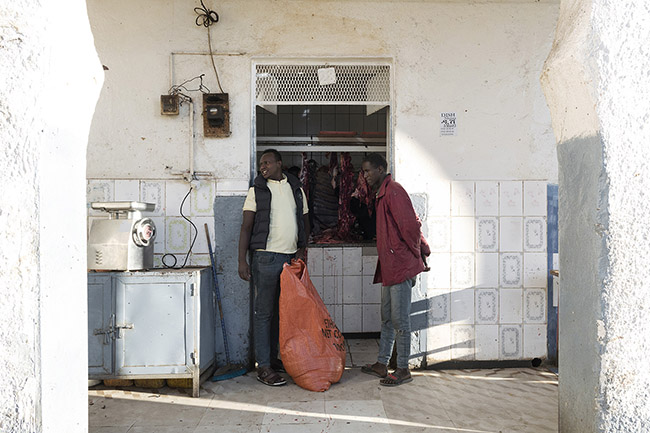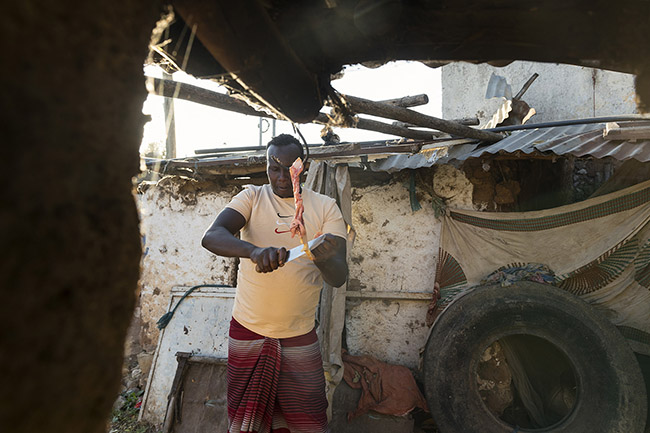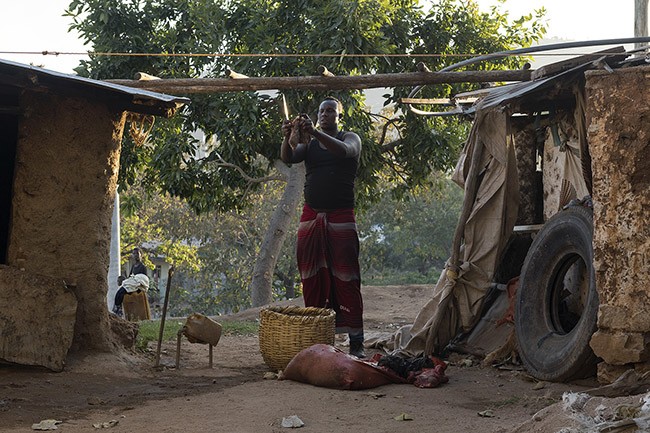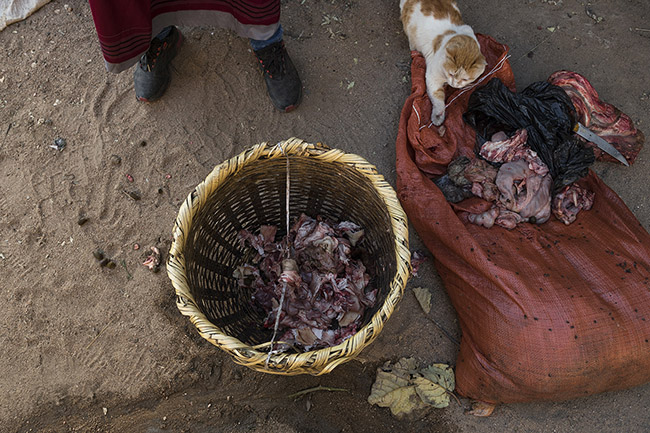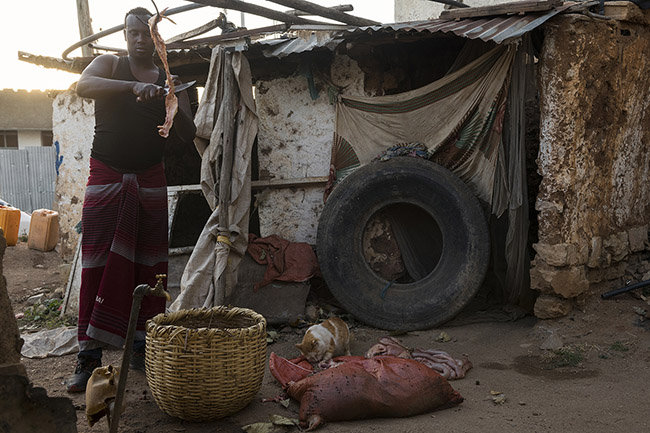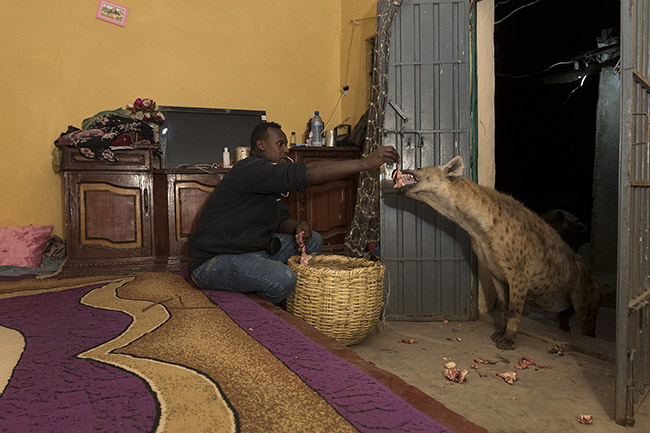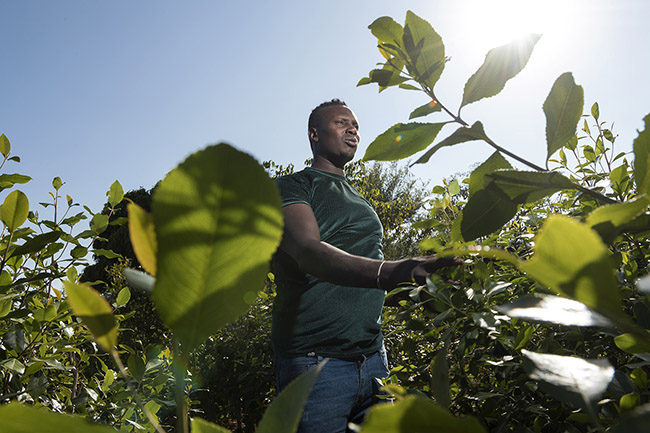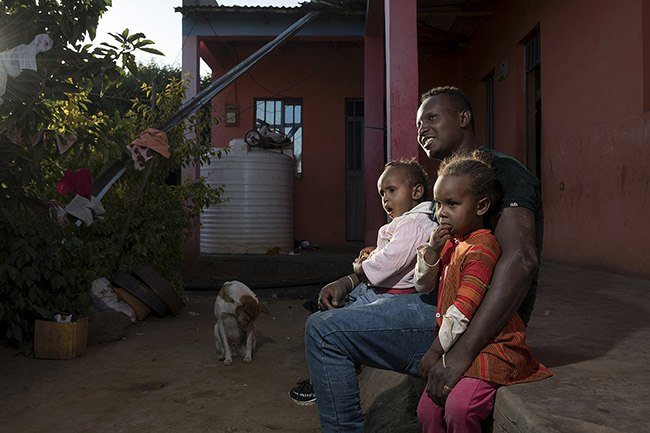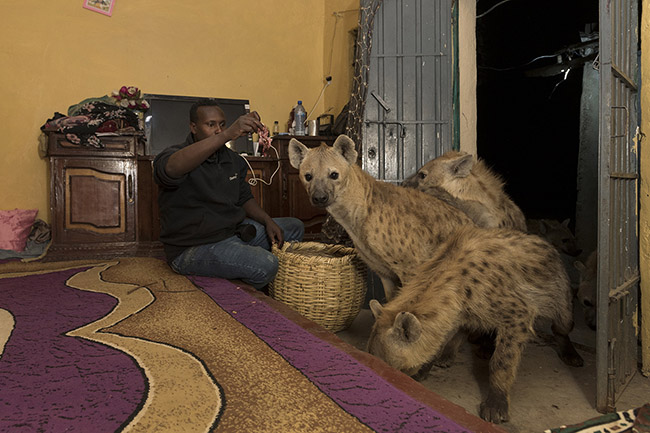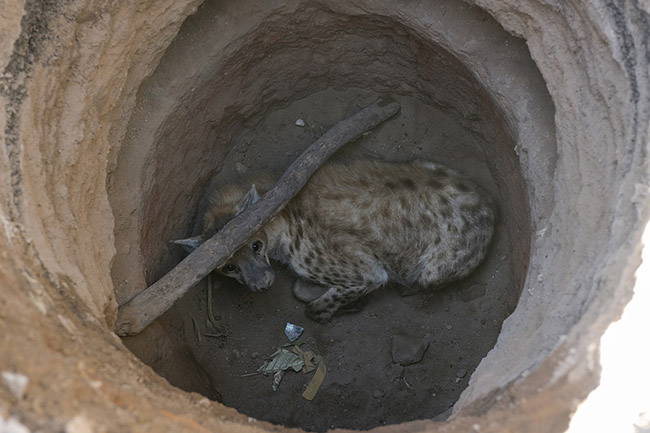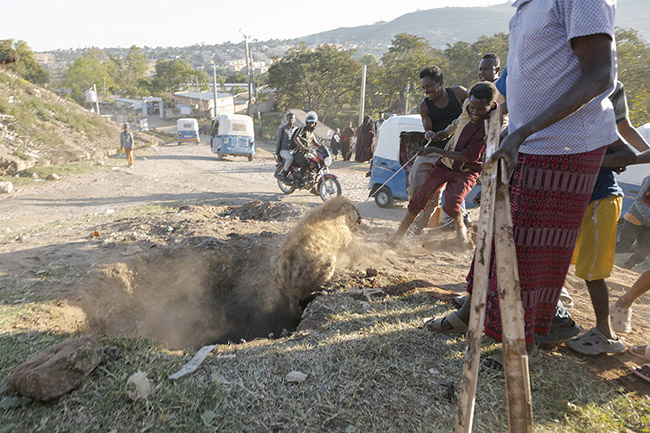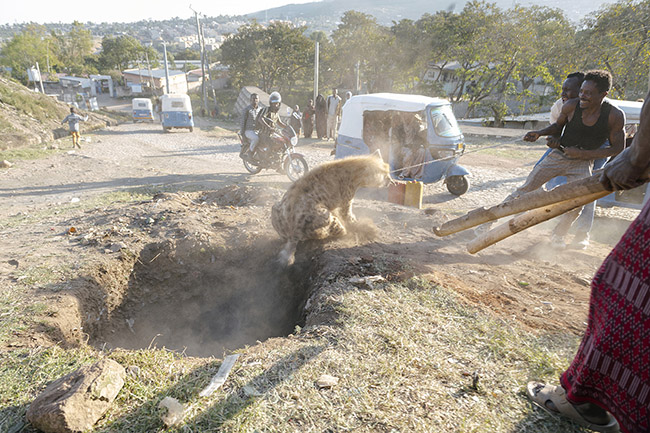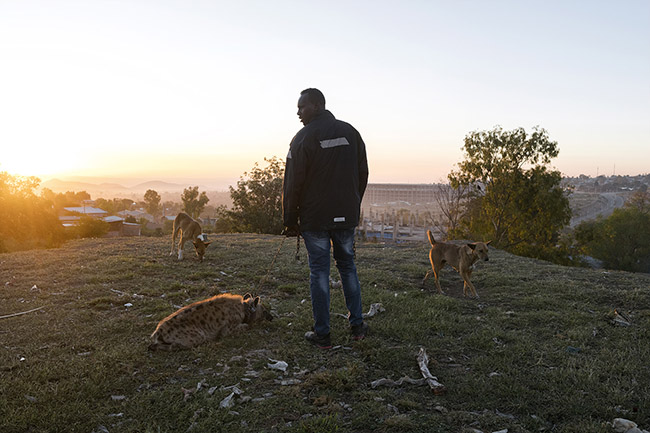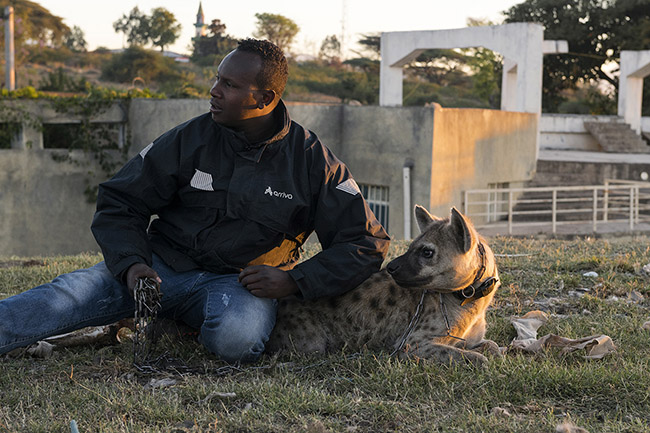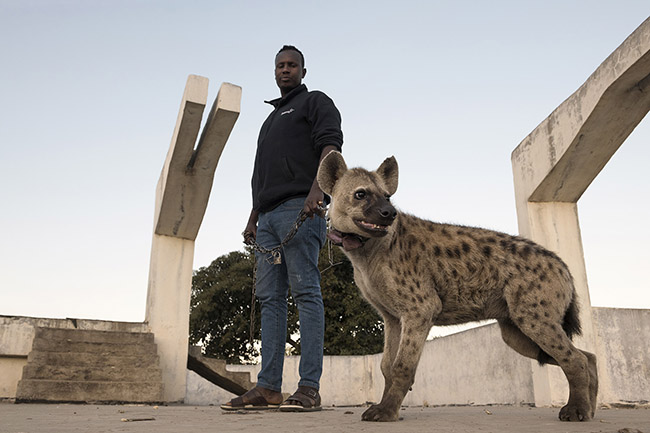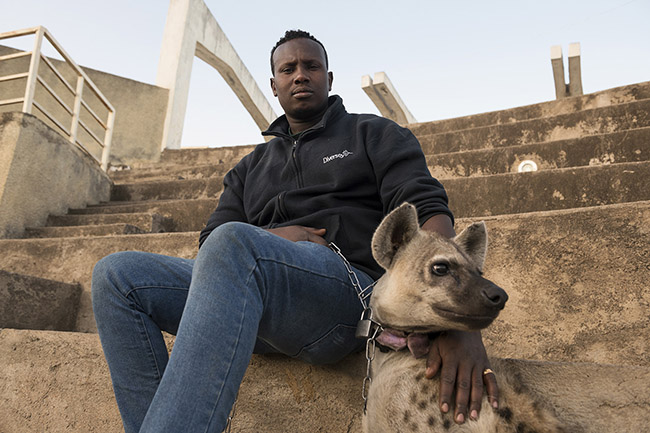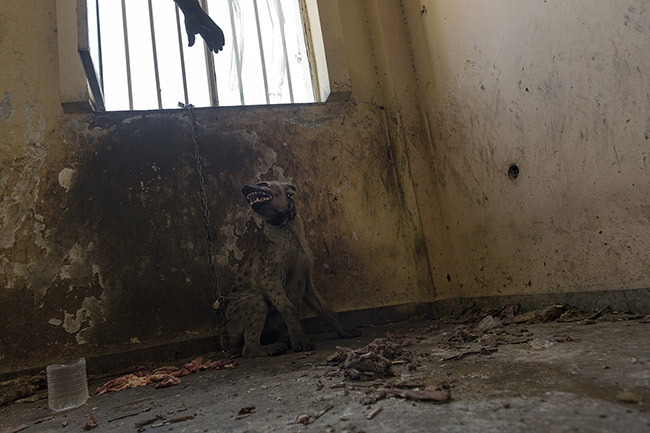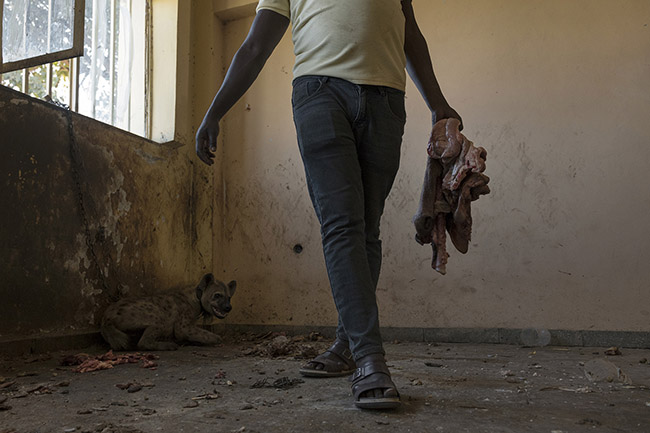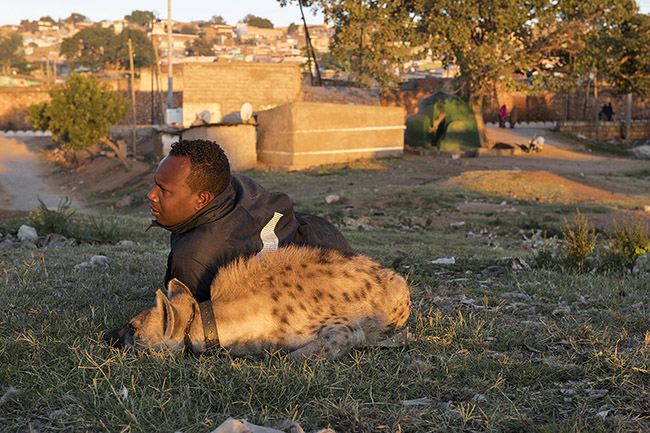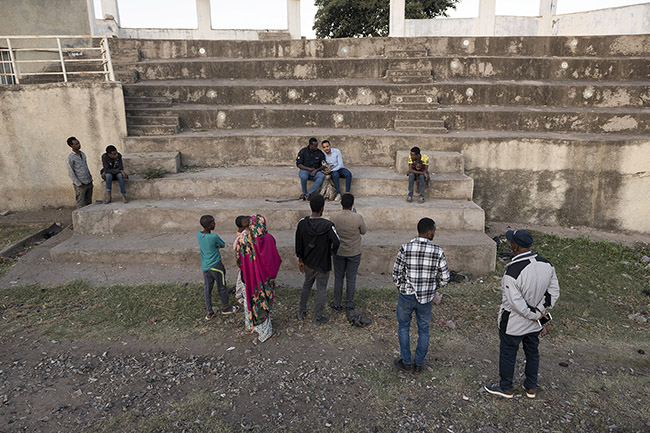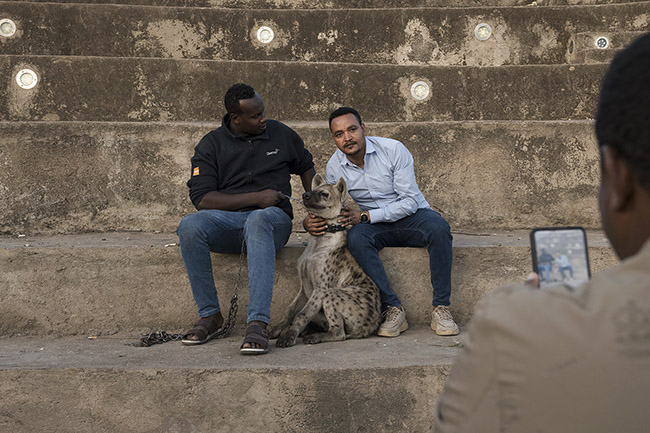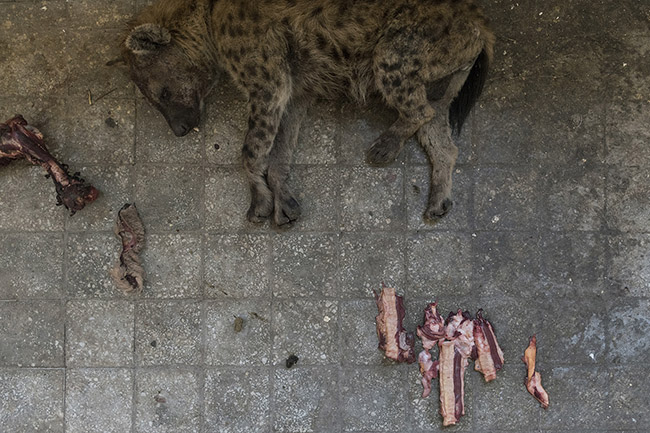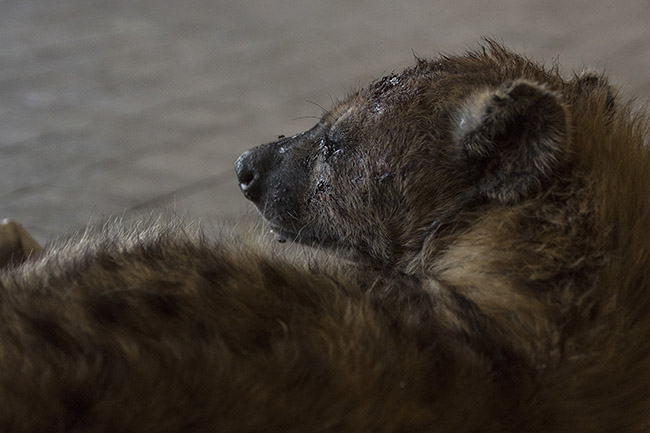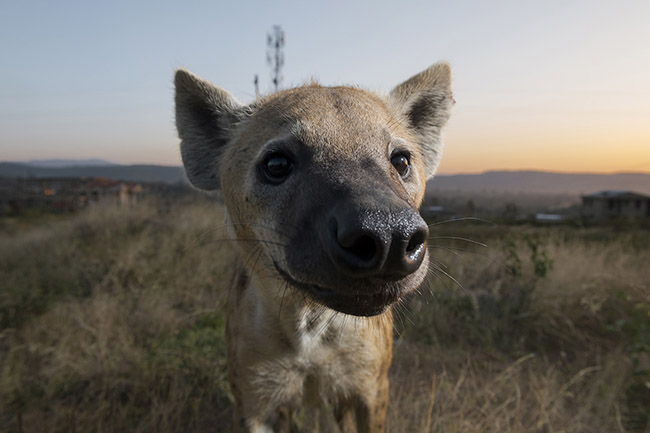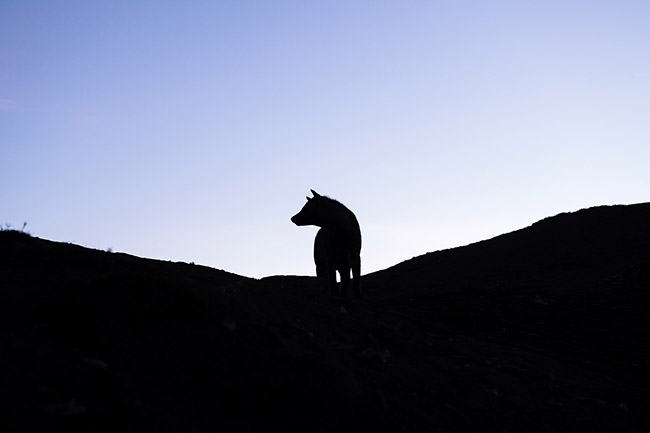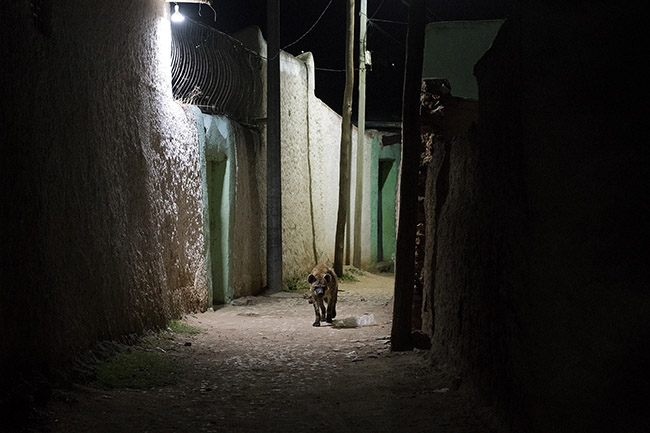Ethiopia
Harar: The Pact of the Hyenas
Harar: The Pact of the Hyenas
Where: Ethiopia
When: 2023
As the sun begins to decline behind the minarets of the fortified old town of Harar, in eastern Ethiopia, the calls of the muezzins for the fourth prayer of the day can be heard in the distance. And as the sky slowly darkens, dogs bark, alerting to the presence of danger. Soon, a silhouette characterized by a long neck topped with rounded ears emerges from the darkness. At the same time, on the small hill that borders his house, a man sits on a rock, calling out in a strange dialect: "... Koti, Challa, Botay, Chaltou, Falmata...".
This man is Abbas Saleh, better known as Hyena Man, and like every evening, he calls the spotted hyenas that populate the surrounding area of the city. Abbas is, indeed, the guardian of a centuries-old tradition linking the inhabitants of Harar and the hyenas in a strange and fascinating pact.
In the emerging twilight, a hyena approaches silently, circling around Abbas, signaling that dinner can be served. Abbas then takes out a first piece of meat from his basket and, with the calmness of a pet dog, the hyena takes it, and then retreats into the darkness to enjoy its meal. After the first blessing, other eyes begin to shine in the shadow like stars in the sky, and, at the call of their name, one by one, the hyenas join the banquet until they form an impressive gathering of about forty beasts, swarming around their feeding master, exchanging chuckles and grunts in a nocturnal symphony.
Like shadows of the night, their eyes gleaming with a golden glow in the darkness, Harar's hyenas seem almost familiar, as if they know every corner of the city. They move with grace, their movements fluid and precise, and with each encounter, a unique aura, mixed with a hint of almost mystical excitement, emanates from them.
In Harar, life is punctuated by these encounters with the hyenas. These majestic predators, guardians of the city's soul, remind us that here, since time immemorial, humans and wildlife have forged a pact of good neighborliness based on peaceful coexistence and mutual respect.
Full story, both in French and English, available on request.








